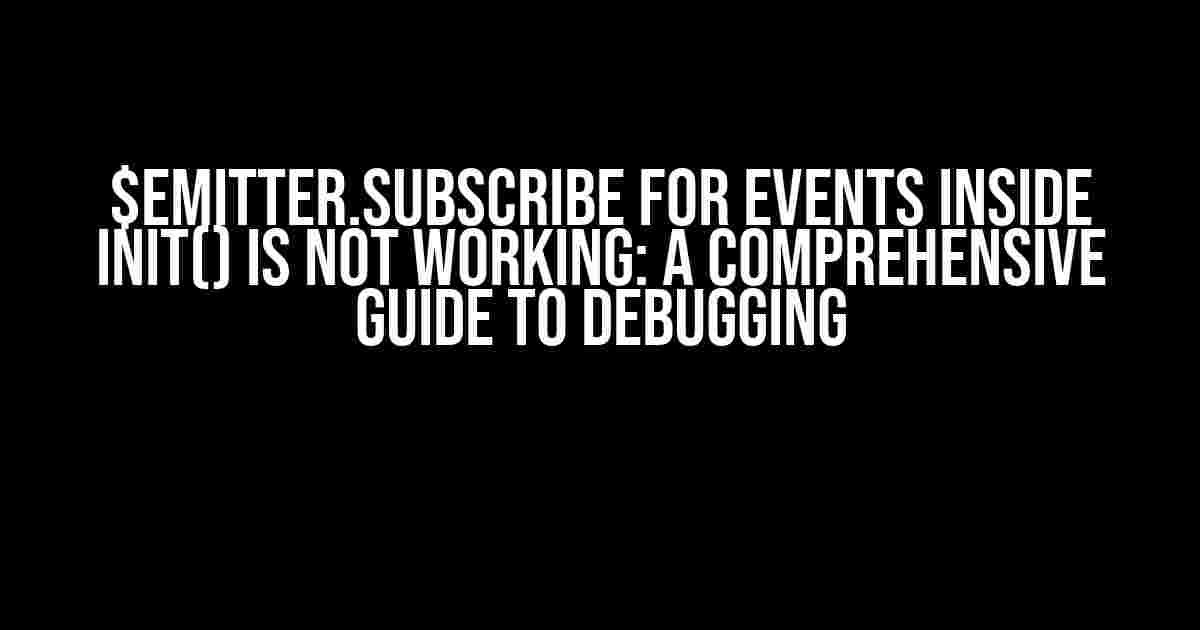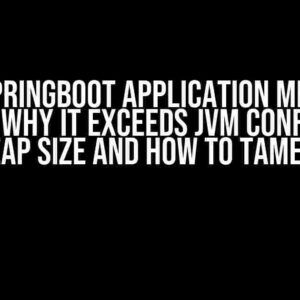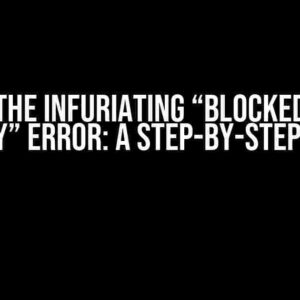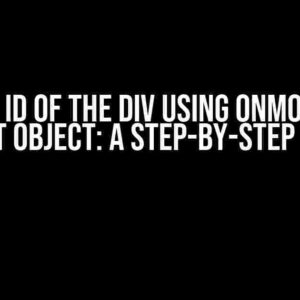Are you stuck with the frustrating issue of $emitter.subscribe not working as expected inside the init() function? You’re not alone! This article will walk you through the common pitfalls and provide a comprehensive guide to debugging this issue.
Understanding $emitter.subscribe
$emitter is a popular event-driven architecture that allows components to communicate with each other. The subscribe method is used to listen for events and execute a callback function when an event is triggered. However, when used inside the init() function, it can sometimes fail to work as expected.
Why $emitter.subscribe inside init() might not work
There are several reasons why $emitter.subscribe might not work as expected inside the init() function:
- Initialization Timing: The init() function is called during the component’s initialization phase. If the event emitter is not fully initialized or configured, the subscribe method might not work.
- Scope and Context: The init() function has its own scope and context. If the subscribe method is called within a nested function or closure, the context might be lost, causing the subscription to fail.
- Event Emitter Configuration: The event emitter might not be properly configured or initialized before the subscribe method is called. This can lead to unexpected behavior.
Debugging $emitter.subscribe inside init()
To debug the issue, follow these steps:
- Verify Event Emitter Configuration: Ensure that the event emitter is properly configured and initialized before the subscribe method is called. Check the event emitter’s documentation for configuration options and initialization procedures.
- Check Initialization Timing: Verify that the init() function is called after the event emitter is fully initialized. If necessary, use a timer or a promise to delay the subscription until the event emitter is ready.
- Inspect Scope and Context: Use the browser’s developer tools or a debugging library to inspect the scope and context of the init() function. Ensure that the subscribe method is called within the correct scope and context.
- Log and Console Debug: Add console logs and debug statements to inspect the event emitter’s state and the subscription process. This can help identify where the issue is occurring.
Example Code: Debugging $emitter.subscribe inside init()
// Example code using Vue.js and VueX
import Vue from 'vue'
import Vuex from 'vuex'
const store = new Vuex.Store({
// ...
})
export default {
init() {
console.log('Init function called')
// Delay subscription until event emitter is ready
setTimeout(() => {
store.$emitter.subscribe('MY_EVENT', (data) => {
console.log('Received event:', data)
})
}, 1000)
}
}
Common Solutions to $emitter.subscribe Issues
Here are some common solutions to $emitter.subscribe issues inside the init() function:
| Solution | Description |
|---|---|
| Use $emitter.on instead of $emitter.subscribe | $emitter.on is an alias for $emitter.subscribe. Try using $emitter.on to see if it makes a difference. |
| Use $emitter.$on instead of $emitter.subscribe | $emitter.$on is a special prefix for subscribing to events on the root instance. Try using $emitter.$on to see if it makes a difference. |
| Check for typos and case sensitivity | Ensure that the event name is correctly spelled and cased. A single typo can cause the subscription to fail. |
| Verify event emitter configuration | Double-check the event emitter’s configuration and initialization. Ensure that the event emitter is properly set up before subscribing to events. |
Conclusion
$emitter.subscribe inside the init() function can be a challenging issue to debug. However, by following the steps outlined in this article, you can identify and fix the issue. Remember to verify the event emitter’s configuration, check the initialization timing, inspect the scope and context, and use logging and console debug to identify the problem.
If you’re still struggling with the issue, try using $emitter.on or $emitter.$on instead of $emitter.subscribe. Don’t forget to check for typos and case sensitivity, and ensure that the event emitter is properly configured and initialized.
Final Thoughts
Debugging $emitter.subscribe inside the init() function requires patience, persistence, and a systematic approach. By following this guide, you’ll be well-equipped to tackle this issue and get your event-driven architecture working smoothly.
Remember, debugging is an art that requires creativity, attention to detail, and a willingness to learn. Don’t be afraid to experiment, try new approaches, and ask for help when needed.
Happy debugging!
Frequently Asked Question
Having trouble with $emitter.subscribe for events inside init()? You’re not alone! Here are some common questions and answers to help you get back on track.
Why doesn’t $emitter.subscribe work inside init()?
The reason $emitter.subscribe doesn’t work inside init() is because the event hasn’t been triggered yet. The init() method is called when the component is initialized, and at that point, the event hasn’t been emitted. You need to subscribe to events after the component has been initialized and the event has been triggered.
How do I subscribe to events inside init() then?
One way to subscribe to events inside init() is to use a setTimeout function. This allows the component to finish initializing before attempting to subscribe to events. For example, `setTimeout(() => this.$emitter.subscribe(‘event’, () => { /* do something */ }), 0);`. This is a bit of a hack, but it can get the job done.
Are there any other ways to subscribe to events without using setTimeout?
Another approach is to use the mounted lifecycle hook instead of init(). Mounted is called after the component has been rendered, which means the event has been triggered and you can safely subscribe to it. For example, `mounted() { this.$emitter.subscribe(‘event’, () => { /* do something */ }); }`. This is a more elegant solution than using setTimeout.
What if I need to subscribe to multiple events inside init()?
If you need to subscribe to multiple events inside init(), you can create a separate method that handles all the event subscriptions and call that method inside mounted(). This keeps your code organized and easy to maintain. For example, `methods: { subscribeToEvents() { this.$emitter.subscribe(‘event1’, () => { /* do something */ }); this.$emitter.subscribe(‘event2’, () => { /* do something */ }); } }, mounted() { this.subscribeToEvents(); }`.
Are there any best practices for using $emitter.subscribe?
Yes! One best practice is to always unsubscribe from events when your component is destroyed to prevent memory leaks. You can do this by calling `this.$emitter.unsubscribe(‘event’)` inside the beforeDestroy() lifecycle hook. Additionally, make sure to handle errors properly by adding error handlers to your event subscriptions.




